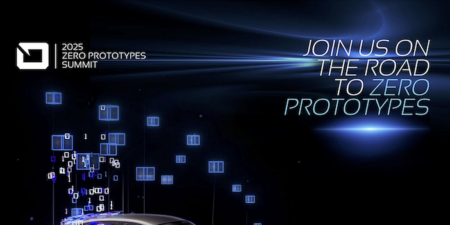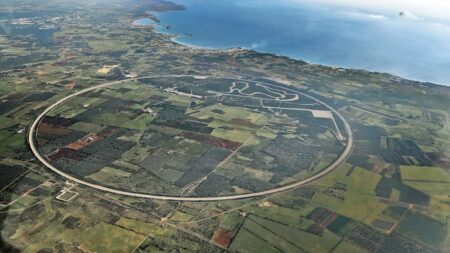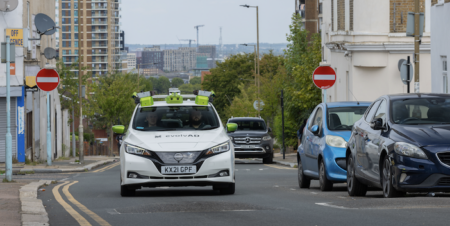Lotus has unveiled the E-R9, a design study for a next-generation pure electric endurance racer that could be ready to hit the track for the 2030 season. The car is finished in black and gold as a nod to Lotus’ motorsport heritage that led to 13 Formula 1 championship titles – but tradition ends there, as the E-R9 is a clear departure from the norm. The EV racer features a sleek fighter jet-style canopy centrally mounted in a delta-wing upper body, with innovations including advanced active aerodynamics with ‘morphing’ body panels, and vertically mounted control surfaces to assist with high-speed cornering.
The E-R9 has been developed by Lotus Engineering, the consultancy division of the business which delivers projects for external clients. The car has been created as a technology showcase of its philosophy, capability and innovation in the fields of advanced electrified powertrains and aerodynamics.
E-R stands for ‘Endurance Racer’, while 9 is the car’s competition number, chosen in tribute to Lotus’ racing past. It was in a Lotus Mark IX that the race team made its debut appearance at the Le Mans 24 Hours, with company founder Colin Chapman among the drivers competing. The year was 1955, meaning the E-R9 race car concept – if raced in 2030 – would be in celebration of the Mark IX’s 75th anniversary.
The concept is being developed by the engineering team of Richard Hill, chief aerodynamicist at Lotus, and Louis Kerr, principal platform engineer on the Lotus Evija pure electric hypercar as well as technical director, GT, Geely Group Motorsports International. Visually it was brought to life by the Lotus Design team, led by Russell Carr, design director for Lotus.
Richard Hill explained the design: “What we’ve tried to do is to push the boundaries of where we are technically today and extrapolate into the future. The Lotus E-R9 incorporates technologies which we fully expect to develop and be practical.”
The innovative ‘morphing’ body panels are located across the delta-wing profile, with active surfaces that can change their shape and attitude to the airflow, either at the press of a button by the driver or automatically according to performance sensor inputs, to minimise drag on the straights or maximise downforce in the corners. Vertical control surfaces at the rear would generate aerodynamic forces to help the car change direction, without the limitations of grip at the tyre contact patch. The result, says the engineering team, is “a racer that’s partly driven like a car and partly flown like a fighter jet.”
Speed is delivered by an advanced electric drivetrain that powers each wheel independently, a system enhanced with torque-vectoring. It builds on technology already integrated on the Evija, though for the E-R9 it would be fully adjustable by the driver on the move.
Louis Kerr commented: “Battery energy density and power density are developing significantly year on year. Before 2030, we’ll have mixed-cell chemistry batteries that give the best of both worlds, as well as the ability to ‘hot-swap’ batteries during pitstops.”





